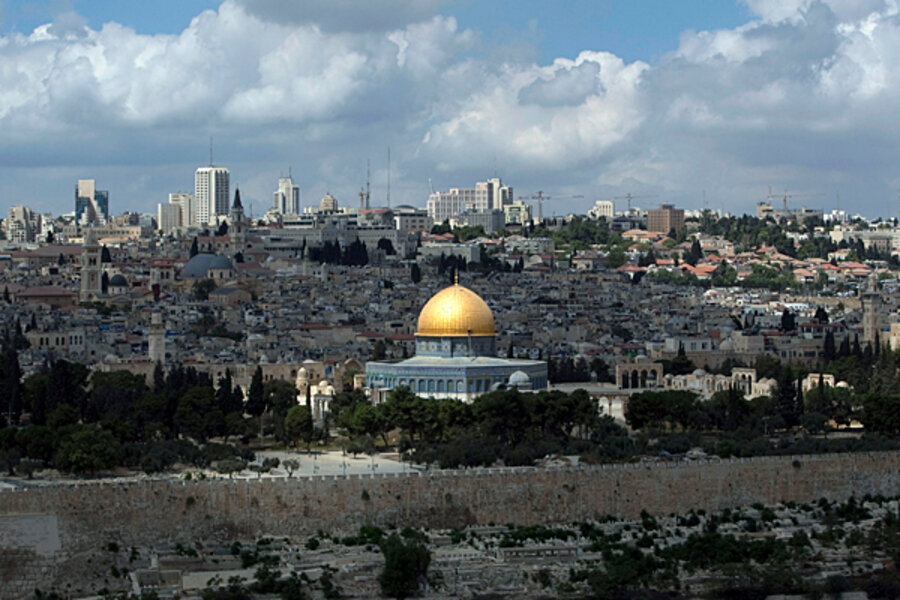The biblical King David conquered Jerusalem about 3,000 years ago, and his son Solomon built the temple on the site where Jews believe Abraham planned to offer Isaac as a sacrifice – proving his dedication to God. The site become the symbolic center of the Jewish nation.
In the 7th century AD, Muslims – who believed that the prophet Muhammad ascended into heaven from the Temple Mount area – captured Jerusalem from the Christians. Today it is considered the third holiest city in Islam.
These two overlapping histories are most starkly illustrated today in the Temple Mount. A remnant of the Second Temple – the Western Wall – lines the compound, which is now home to two Muslim holy sites – the Dome of the Rock and the Al Aqsa Mosque.
But while the Temple Mount is potentially the most contested, outside the Old City there are numerous sacred sites in an area known as the Holy Basin – including the Mt. of Olives cemetery, estimated to hold as many as 300,000 graves.
A final peace deal would need to resolve who will control access to these holy sites.





